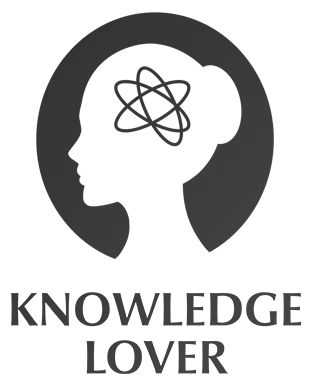Learn Something New Every Day: The Definitive Guide

There’s something quietly radical about committing to learn something new every day. Not in a dramatic, life overhaul kind of way, but in the small, persistent choices that compound into something remarkable.
I’ve watched friends transform their careers, retirees find new purpose, and burned-out professionals rediscover their curiosity – all through the deceptively simple practice of daily learning. This guide isn’t about becoming a polymath or mastering ten skills simultaneously. It’s about building a sustainable relationship with knowledge that enriches your life without overwhelming it.
Whether you’re looking to advance your career, keep your mind sharp, or simply satisfy that nagging feeling that you should be growing somehow, this comprehensive guide will show you how to make daily learning an effortless part of your life.
1. Why Learning Something New Every Day Actually Matters
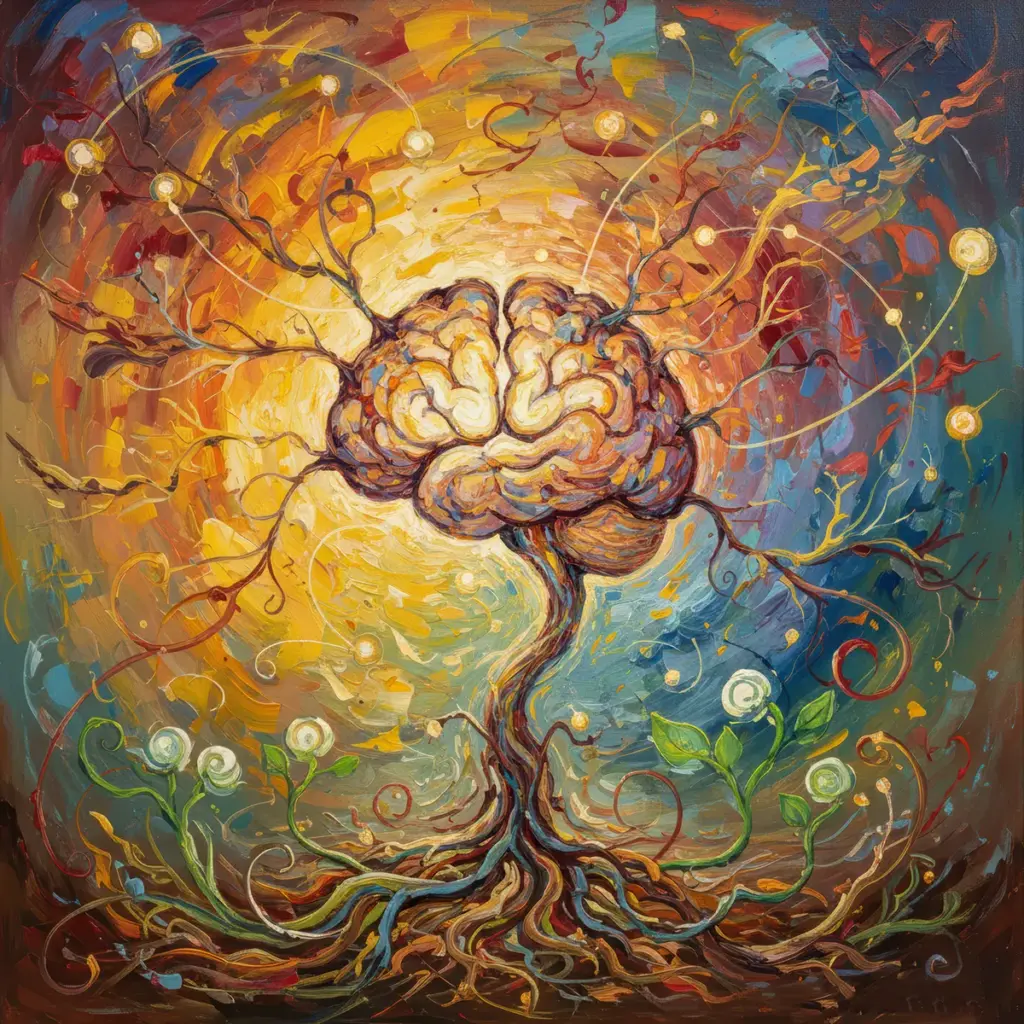
The Science Behind Daily Learning
Your brain isn’t fixed. That’s not motivational fluff – it’s neuroscience.
Neuroplasticity, the brain’s ability to reorganize itself by forming new neural connections, continues throughout your life. Every time you learn something new, your brain literally changes its structure. Synapses strengthen, new pathways form, and cognitive reserve builds up like a savings account for your mental future.
Research from the University of California found that adults who engage in continuous learning show slower cognitive decline as they age. The brain regions associated with memory and executive function remain more robust in lifelong learners compared to their peers who stopped actively learning after formal education ended.
But here’s what makes daily learning particularly powerful: consistency matters more than intensity. Learning something small each day creates sustained neural activity that’s more beneficial than sporadic deep-dive sessions. Think of it as the difference between watering a plant daily versus drowning it once a week.
The Compound Effect of Small Learning
Let’s do some simple math that might change your perspective.
If you learn just one new thing each day – a word, a concept, a technique – that’s 365 new pieces of knowledge per year. Over five years, that’s 1,825 additions to your mental library. Over a decade? Nearly 4,000.
But the real magic happens in the connections between these pieces of knowledge. Learning compounds in ways that money never could. That random fact about behavioral psychology connects to your understanding of marketing, which informs how you communicate with your team, which improves your leadership skills.
Sarah, a graphic designer I met, started learning one new Photoshop shortcut every morning. Six months later, she wasn’t just faster – she was thinking differently about her work. The technical knowledge sparked creative approaches she’d never considered before. She landed three new clients specifically because her portfolio showed techniques she hadn’t known existed half a year earlier.
Beyond Career: The Holistic Benefits
Learning something new every day does more than pad your resume.
Cognitive benefits extend into daily life in unexpected ways. You’ll find yourself solving problems more creatively, making decisions more confidently, and adapting to change more smoothly. Your brain becomes more flexible, more resilient.
Emotional wellbeing improves too. There’s genuine satisfaction in progress, even tiny progress. On difficult days, learning something – anything – can be the small win that shifts your entire mood. It’s a form of self-care that’s productive without being punishing.
Social connections deepen when you’re genuinely curious and continuously learning. You become more interesting, sure, but more importantly, you become more interested. Conversations shift from small talk to genuine exchange. You ask better questions. You contribute more meaningfully.
And then there’s the confidence that comes from proving to yourself, daily, that you can still grow. That you’re not stuck. That yesterday’s version of you doesn’t have to be today’s ceiling.
2. The Psychology of Learning: Understanding How Your Brain Actually Works

How We Learn (And Why Most Methods Fail)
You probably learned to cram for tests in school. Review material once, maybe twice, right before the exam. Then forget it immediately after.
That’s not learning. That’s short-term memorization.
Real learning requires a different approach, one that works with your brain’s natural processes rather than against them. Understanding these processes makes everything else in this guide more effective.
Active learning beats passive consumption every time. Reading an article isn’t enough. You need to engage with the material – take notes, ask questions, explain it to someone, or apply it somehow. When you actively work with information, your brain marks it as important and worth storing.
Spaced repetition is your brain’s best friend. You’ll remember more by reviewing something three times over three weeks than by reviewing it thirty times in one day. The struggle to recall information strengthens the memory trace. Easy isn’t always better.
Emotional engagement supercharges retention. You remember stories better than facts, experiences better than descriptions, and anything connected to strong emotions stays with you longest. That’s why you can recall embarrassing moments from twenty years ago but forget what you had for lunch yesterday.
Learning Styles: The Nuanced Truth
The internet is full of advice about discovering your learning style – visual, auditory, kinesthetic, or reading/writing. Here’s the nuanced truth: while you might have preferences, limiting yourself to one style actually hinders learning.
Research by cognitive scientists has shown that matching teaching methods to supposed learning styles doesn’t improve outcomes. What does work is varying your approach. Read about a concept, watch a video, discuss it with someone, then try doing it yourself. Multiple modalities create richer, more accessible memories.
Think of learning styles less as rigid categories and more as tools in your toolkit. Sometimes you need a hammer, sometimes a screwdriver. The best learners know when to use which tool.
Overcoming Mental Barriers
The biggest obstacle to daily learning isn’t time or resources. It’s mindset.
Fixed mindset tells you that intelligence and ability are innate and unchangeable. I’m just not a math person.” “I’m too old to learn languages.” “I don’t have a creative bone in my body.
Growth mindset recognizes that abilities develop through effort and practice. The difference isn’t just philosophical – it’s practical. People with growth mindsets persist through difficulty because they see struggle as part of the process, not evidence of inadequacy.
I used to think I was terrible at music. Turns out I’d just never actually tried to learn an instrument properly. Six months of daily practice later, I’m still not great, but I can play songs I enjoy. The revelation wasn’t about musical talent – it was about questioning the story I’d told myself for ten years.
Imposter syndrome affects learners at every level. That feeling that you’re a fraud, that everyone else understands except you, that you’ll be exposed as not belonging. Here’s what helps: everyone feels this way sometimes. Experts feel it more than beginners because they’re more aware of what they don’t know.
The solution isn’t to wait until imposter syndrome disappears. It’s to learn anyway, with imposter syndrome sitting uncomfortably beside you.
Building a Learning Habit That Sticks
Habits aren’t about willpower. They’re about architecture.
The habit loop has three components: cue, routine, and reward. For daily learning:
- Cue: A trigger that initiates the behavior (your morning coffee, your commute, right before bed)
- Routine: The learning activity itself (reading an article, practicing vocabulary, watching a tutorial)
- Reward: The positive feeling that reinforces the habit (progress tracked, knowledge gained, curiosity satisfied)
Start absurdly small. Don’t commit to reading a book a week – commit to opening a book every day. Don’t pledge to become fluent in Spanish – pledge to learn one word daily. The consistency matters infinitely more than the scale.
James Clear calls this the “two-minute rule” – any habit should take less than two minutes to start. You can learn something meaningful in two minutes. You can’t become an expert, but that’s not the point. The point is showing up.
3. What to Learn: Finding Your Focus Without Getting Lost
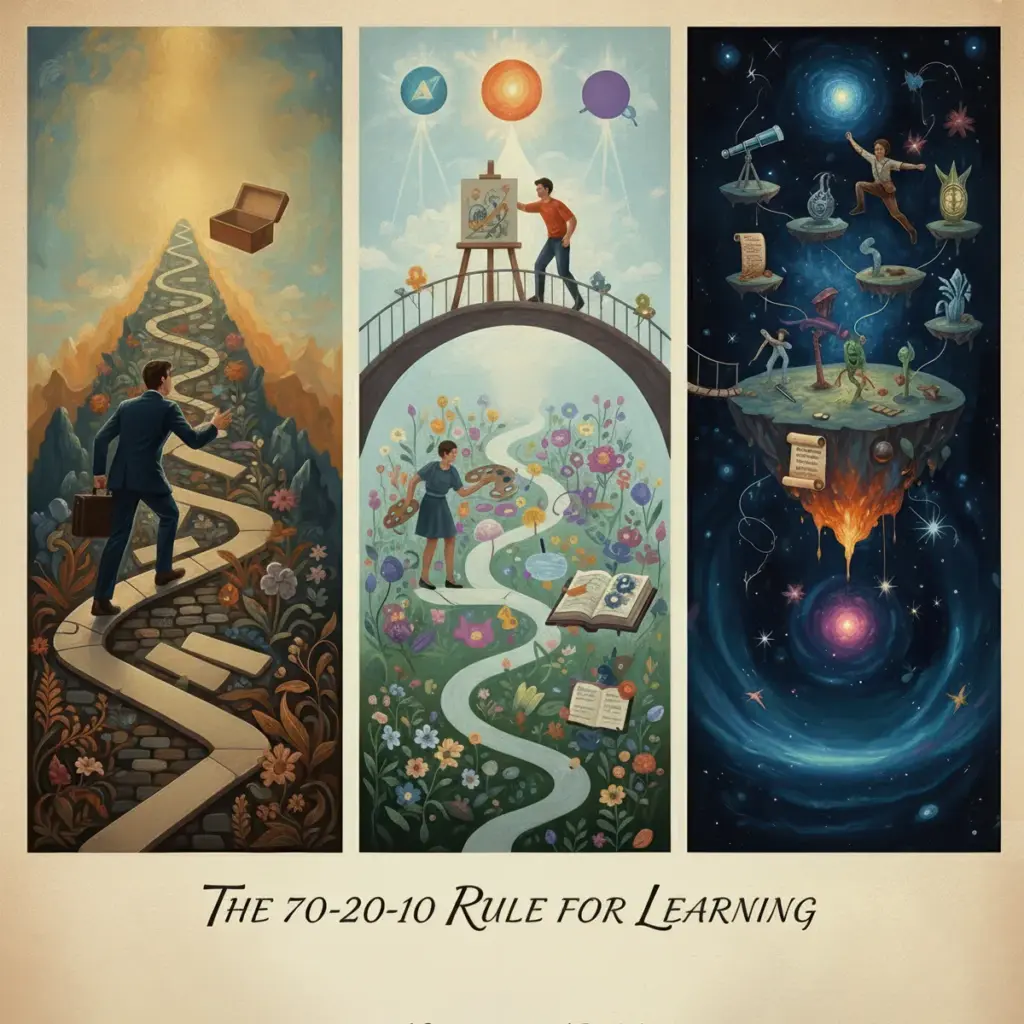
The Paradox of Infinite Choice
The internet gives you access to nearly all human knowledge. This is both amazing and paralyzing.
Too many options create decision fatigue. You spend more time choosing what to learn than actually learning. Or you jump between topics so frequently that nothing sticks. I’ve watched people cycle through learning French, then photography, then coding, then French again, never progressing beyond beginner level in anything.
The solution isn’t to pick one thing forever. It’s to create intentional structure around your exploration.
Categories Worth Exploring
Professional skills are the obvious starting point. Whatever industry you’re in, it’s evolving. New tools emerge, best practices shift, entire disciplines transform. Staying current isn’t optional anymore – it’s survival.
But don’t stop there.
Creative pursuits exercise different mental muscles. Drawing, writing, music, design – these teach you to think differently, to see patterns invisible to purely analytical thinking. Many breakthrough innovations come from people who combined technical expertise with creative thinking.
Languages open doors to different cultures and ways of thinking. But even if you never become fluent, the process of learning a language teaches you about grammar, structure, and how meaning itself works. It makes you better at your native language too.
Financial literacy affects everyone but is taught to almost no one. Understanding compound interest, investment basics, how taxes work, negotiation strategies – this knowledge pays dividends literally and figuratively.
Health and wellness knowledge helps you make better decisions about the body you live in. Not fad diet stuff, but actual understanding of nutrition, exercise science, sleep, stress management.
History and culture provide context for the present. Understanding how we got here helps you navigate where we’re going. Plus, history is full of fascinating stories that illuminate human nature.
Practical life skills get overlooked in favor of more impressive-sounding pursuits. But knowing basic home repair, cooking techniques, first aid, car maintenance – these create real value and independence.
Creating Your Personal Learning Roadmap
Here’s a framework that balances structure with flexibility.
The 70-20-10 Rule for Learning:
- 70% of your learning time goes to skills directly relevant to your current goals (career advancement, immediate problems, core competencies)
- 20% goes to adjacent skills that complement your main focus (a developer learning design, a writer learning marketing)
- 10% goes to random curiosity-driven exploration with no immediate application
This keeps you focused without becoming narrow. You’re building depth where it matters while maintaining the breadth that sparks creativity and keeps things interesting.
Themed Learning Periods help maintain focus while allowing variety. Dedicate a month or quarter to a particular area:
- January: Financial literacy
- February-March: A new language
- April: Health and nutrition
- May-June: Professional skills
Within each theme, you still learn something daily, but there’s enough continuity for real progress.
The T-Shaped Knowledge Approach means developing deep expertise in one area (the vertical part of the T) while maintaining broad general knowledge across many areas (the horizontal part). This makes you both specialist and generalist – valuable in ways that pure specialists or pure generalists aren’t.
Following Curiosity vs. Strategic Learning
There’s tension between learning what you should and learning what interests you.
Strategic learning is pragmatic. You identify skills that will advance your career or achieve specific goals. You create a plan and execute it. This works, and there’s a place for it.
But curiosity driven learning has its own value. Following random interests leads to unexpected connections and opportunities you couldn’t have planned for. Steve Jobs’ calligraphy class seemed useless at the time but later influenced Apple’s revolutionary approach to typography and design.
The best approach integrates both. Use the 70-20-10 rule above, where strategic learning dominates but curiosity gets space too. Or alternate: strategic learning on weekdays, curiosity-driven exploration on weekends.
The key is giving yourself permission to learn “useless” things sometimes. Not everything needs ROI. Some knowledge is valuable simply because it makes you more fully human.
4. How to Learn: Proven Methods That Actually Work

Micro-Learning: The Power of Small
You don’t need hours of uninterrupted time to learn effectively. Five focused minutes beats thirty distracted ones.
Micro-learning works because it fits into life’s natural gaps. Waiting for coffee to brew? Learn three vocabulary words. Commuting? Listen to an educational podcast. Queue at the grocery store? Read a long-form article you saved.
These moments add up. Fifteen minutes daily equals over ninety hours yearly. That’s enough to gain genuine proficiency in something meaningful.
Make it ridiculously convenient. Download learning apps before you need them. Save articles to read offline. Create a playlist of educational videos. Keep a book on your nightstand. The less friction between you and learning, the more consistently you’ll do it.
Active Learning Techniques That Transform Understanding
The Feynman Technique is brilliantly simple: try explaining what you’ve learned to someone else (or to yourself) using plain language. If you can’t explain it simply, you don’t understand it yet. This immediately reveals gaps in your knowledge and forces you to think more deeply.
I use a variation of this by writing brief explanations of new concepts in my own words. Not copying definitions – translating them into something I’d actually say. This active translation deepens understanding far more than passive rereading ever could.
Deliberate practice is more than repetition. It’s focused effort on specific weaknesses with immediate feedback. A pianist doesn’t just play songs over and over – they isolate difficult passages and work on them separately.
For daily learning, this means:
- Identifying exactly what you don’t understand
- Practicing that specific thing
- Getting feedback (from a teacher, a community, or self-assessment)
- Adjusting your approach based on results
The SQ3R Method works especially well for reading:
- Survey: Skim the material to get an overview
- Question: Turn headings into questions
- Read: Read actively, looking for answers
- Recite: Summarize what you’ve learned in your own words
- Review: Go back over the material periodically
This transforms passive reading into active engagement. It takes slightly more time upfront but dramatically improves retention.
Note-Taking That Actually Helps You Remember
Bad notes are transcription – copying information verbatim without processing it. Good notes are transformation – converting information into understanding.
The Cornell Method divides your page into three sections:
- A narrow left column for keywords and questions
- A larger right section for notes during learning
- A summary section at the bottom
This structure forces you to identify key concepts, organize information, and synthesize understanding – all of which strengthen memory.
Mind mapping works better for visual thinkers. Start with a central concept, then branch out to related ideas, sub-ideas, and connections. The spatial arrangement helps your brain see relationships that linear notes obscure.
Sketchnoting combines words and simple drawings. Don’t worry about artistic skill – stick figures and basic shapes work fine. The act of translating concepts into visual elements deepens processing and makes notes more memorable and reviewable.
Whatever method you choose, the key is engaging with the material, not just recording it.
Memory Techniques That Sound Weird But Work
Spaced repetition systems schedule reviews based on how well you know something. Items you struggle with come up frequently; items you know well appear less often. This optimizes learning efficiency.
Apps like Anki automate this scheduling. You create flashcards, and the algorithm determines when to show them again. It feels strange at first – you’re reviewing some cards constantly while others disappear for weeks – but it’s backed by decades of cognitive research.
Mnemonic devices create memorable associations. ROY G. BIV for rainbow colors. “My Very Educated Mother Just Served Us Noodles” for planet order. These seem childish, but they work because they transform arbitrary information into meaningful patterns.
Create your own mnemonics for whatever you’re learning. The more personal and bizarre, the better they stick.
Memory palaces leverage spatial memory by associating information with locations in a familiar space. Imagine walking through your house, placing facts or concepts in different rooms. To recall them, mentally retrace your steps.
This ancient technique seems elaborate, but it’s remarkably effective for memorizing sequences, lists, or structured information. Memory champions use variations of this method to memorize thousands of digits.
The Testing Effect reveals that retrieval practice – testing yourself – improves memory more than additional study. Close the book and try to recall what you learned. The struggle to remember actually strengthens the memory. Successful retrieval or not, testing beats reviewing.
Digital Tools for Modern Learners
The right tools don’t guarantee learning, but they can make it easier and more effective.
Learning Management Platforms:
- Coursera: University-level courses, professional certificates, strong academic credibility
- Udemy: Massive course library, affordable pricing, quality varies by instructor
- LinkedIn Learning: Business and professional skills focus, integrated with LinkedIn profiles
- Skillshare: Creative, design, and lifestyle learning, subscription access model
- edX: Partnered with top universities, offers free audits and paid verified certificates
Spaced Repetition Apps:
- Anki: Most powerful and customizable, steeper learning curve
- Quizlet: User-friendly, great for languages and vocabulary
- RemNote: Combines note-taking with spaced repetition
Note Taking Apps with Learning Features:
- Obsidian: Creates a “second brain” with linked notes
- Notion: Flexible databases and organization
- Roam Research: Networked thinking and bidirectional links
Language Learning:
- Duolingo: Gamified, great for motivation, less depth
- Pimsleur: Audio-focused, excellent for speaking
- iTalki: Connect with native speakers for practice
Podcast Apps let you learn while commuting, exercising, or doing chores. Variable speed playback means you can consume more content in less time without sacrificing comprehension (I usually listen at 1.5x speed).
The Enduring Value of Analog Learning
Digital tools are powerful, but don’t underestimate old-school methods.
Handwriting activates different brain regions than typing. The physical act of forming letters creates stronger neural connections. Students who take notes by hand remember material better than those who type – not because handwriting is inherently better, but because it forces selective processing. You can’t transcribe verbatim when writing by hand, so you must think about what’s actually important.
Physical books offer fewer distractions than screens. No notifications, no tempting tabs, no infinite scroll pulling your attention elsewhere. There’s something about the tactile experience – turning pages, seeing your progress – that creates a different relationship with the material.
Learning journals document your journey in ways that feel more permanent than digital notes. Writing by hand slows you down, forces reflection. Years later, you can flip through and see not just what you learned, but how you thought about it at the time.
Flashcards work beautifully for specific types of memorization – vocabulary, formulas, key facts. Making them by hand engages you more than creating digital cards (though digital cards are more convenient for review).
The best approach combines both. Use digital tools for convenience and efficiency, analog methods for depth and retention.
5. Best Resources for Daily Learning
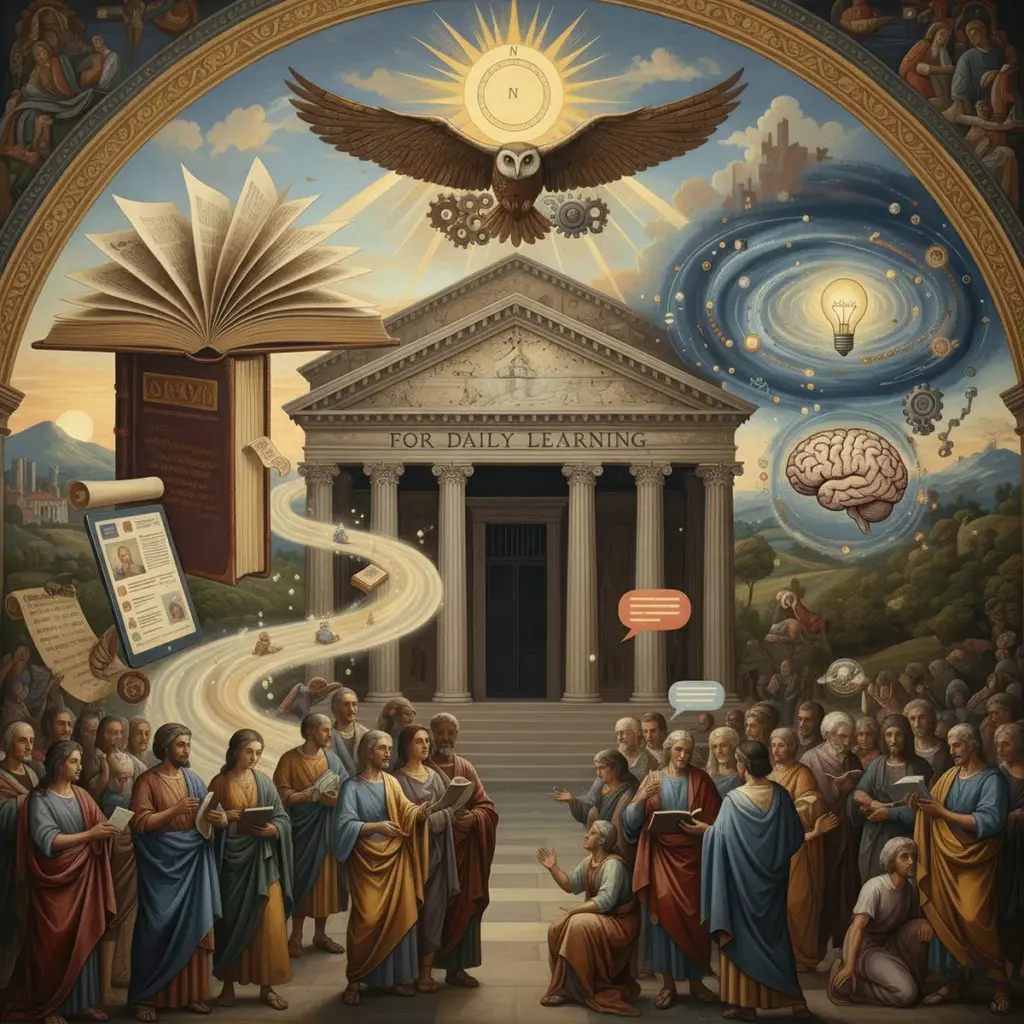
Online Learning Platforms: What’s Actually Worth Your Time
Not all online courses are created equal. Some are transformative. Others are overpriced slideshows with a talking head.
MOOCs (Massive Open Online Courses) democratized education. Top universities offer courses to anyone with an internet connection:
- Coursera partners with universities like Stanford and Yale. Courses are free to audit; certificates cost money. The quality is generally high, though teaching styles vary widely.
- edX offers similar university partnerships with a focus on computer science and engineering. Some courses are rigorous enough to genuinely challenge you.
- Udacity specializes in tech skills with “nanodegree” programs. More expensive but often more practical and career-focused.
Skill-Specific Platforms focus on particular domains:
- Codecademy/freeCodeCamp: Learn programming interactively. freeCodeCamp is completely free and community-driven.
- Duolingo/Babbel: Language learning gamified. Duolingo is free but can feel repetitive; Babbel costs money but offers more structured lessons.
- MasterClass: Celebrity instructors teach their craft. Production quality is stunning, but depth varies. Great for inspiration, less so for technical mastery.
- Brilliant: Interactive learning for math, science, and computer science. Makes complex topics approachable.
Recommended: 80+ Best MOOC (Massive Open Online Course) Providers List
YouTube deserves special mention. It’s chaotic and unstructured, but contains more free educational content than any paid platform. The key is finding quality channels:
For science: Kurzgesagt, Veritasium, 3Blue1Brown
For history: Crash Course, Historia Civilis, Fall of Civilizations
For practical skills: This Old House, America’s Test Kitchen, various coding channels
Subscribe deliberately. Curate your recommendations. YouTube can be an incredible learning tool if you don’t let the algorithm control you.
Reading Resources That Educate and Inspire
Books remain the gold standard for deep learning. But which books?
For daily learning, consider these approaches:
Read broadly across domains. Don’t just read business books if you work in business. Read philosophy, science, history, literature. Cross-pollination of ideas leads to insights impossible within a single field.
Balance classic and contemporary. Old books have survived because they’re good. New books offer current insights. You need both.
Use the “rule of 100 pages.” Give a book 100 pages. If it’s not clicking by then, move on. Life’s too short for books that don’t speak to you, even if everyone says they’re important.
Articles and long-form journalism offer middle ground between books and social media. Publications worth following:
- The Atlantic: Cultural analysis and long-form journalism
- Aeon: Philosophy, psychology, science
- Quanta Magazine: Math and physics made accessible
- Nautilus: Science and culture
- Longreads: Curated long-form from across the web
Newsletters deliver curated learning to your inbox. A few excellent ones:
- Brain Pickings (The Marginalian): Literature, philosophy, science
- Farnam Street: Mental models and decision-making
- Dense Discovery: Technology, culture, design
- Money Stuff: Financial markets explained entertainingly
Academic papers are more accessible than people think. You don’t need a PhD to read research. Google Scholar makes papers searchable, and many are free. Reading studies directly beats reading journalists’ interpretations.
Audio Learning: Education for Your Commute
Podcasts transformed dead time into learning time.
The best educational podcasts depend on your interests, but here are standouts:
General knowledge:
- Radiolab: Science and philosophy through creative storytelling
- 99% Invisible: Design and architecture you don’t notice
- Stuff You Should Know: Explainers on everything
- Planet Money: Economics made entertaining
Deep dives:
- Hardcore History: Multi-hour explorations of historical events
- Philosophize This!: Philosophy history chronologically
- Huberman Lab: Neuroscience and health (long but information-dense)
Professional development:
- The Knowledge Project: Conversations with experts about decision-making
- How I Built This: Entrepreneurship stories
- WorkLife with Adam Grant: Workplace psychology
Audiobooks work brilliantly for certain types of books – narratives, biographies, big-picture thinking. They’re less effective for technical material or anything requiring deep concentration.
The trick with audio learning is matching content to context. Save complex material for focused listening. Use lighter content for backgrounds like commuting or exercising.
Community Learning: The Underrated Multiplier
Learning alone works. Learning with others works better.
Online communities gather people around shared interests:
- Reddit has communities for learning almost anything (r/LearnProgramming, r/LanguageLearning, r/AskHistorians)
- Discord servers create real-time conversation around topics
- Stack Exchange sites answer specific questions across domains
- LinkedIn groups connect professionals in industries
The value isn’t just information – it’s perspective. Seeing how others approach the same material, what questions they ask, what connections they make.
Local meetups and workshops provide in-person learning. Meetup.com, libraries, community colleges, maker spaces – opportunities exist if you look.
Study groups create accountability and deepen understanding. Explaining concepts to others reveals what you actually know versus what you think you know. Plus, they make learning social rather than solitary.
Mentorship accelerates learning impossibly fast. Someone who’s already done what you’re trying to do can point out shortcuts, warn about pitfalls, and provide feedback impossible to get from books or courses.
Finding mentors is easier than people think. Most experts enjoy helping beginners – it feels good to share knowledge. The key is respecting their time and being specific about what you’re asking.
Free vs. Paid: Where to Invest Your Money
Free resources are amazing and often sufficient. But paid resources have advantages: structure, accountability, credibility, support.
When free works best:
- You’re exploring casually without specific goals
- You’re self-motivated and disciplined
- The topic has abundant quality free resources
- You’re supplementing paid learning
When paid is worth it:
- You need structure and accountability
- You want credentials or certificates
- Time is more valuable than money
- You’re serious about mastery
Scholarships and financial aid make paid resources accessible. Most platforms offer them – you just have to ask. Coursera, Udacity, and others have formal scholarship programs.
Don’t default to paid assuming it’s better. But don’t avoid paid options out of principle either. The best resource is the one you’ll actually use.
6. Building Your Daily Learning System
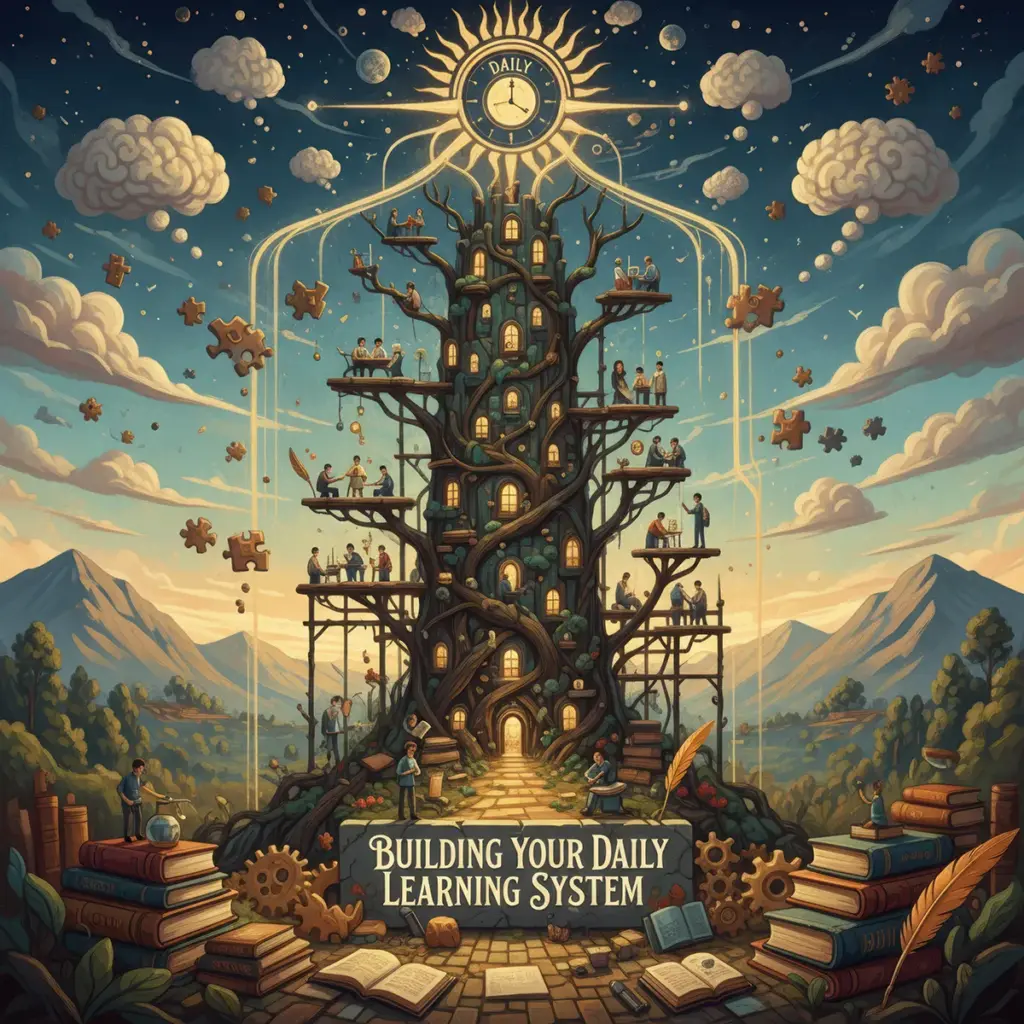
Creating a Schedule That Actually Works
The best schedule for daily learning is the one you’ll stick with. That might not be the one that sounds most impressive.
Morning learners have fresh mental energy and fewer distractions. Learning first thing sets a positive tone for the day and ensures it actually happens before life gets in the way. But if you’re not a morning person, forcing it creates resistance.
Evening learners process the day’s experiences and can connect new learning to things that happened. Some find learning before bed helps with memory consolidation during sleep. Others find it interferes with rest.
Lunchtime or commute learning works if you have consistent breaks. Audiobooks, podcasts, or reading during lunch turns downtime into growth time.
Weekend deep dives complement brief daily learning. Quick daily exposure maintains consistency; longer weekend sessions enable deeper exploration.
Experiment to find your rhythm. Try different times for two weeks each. Notice when learning feels easiest, when retention seems best, when you’re most consistent.
Integration beats addition. Instead of adding learning to your day, integrate it into existing routines:
- Learn while making morning coffee
- Listen to podcasts during your commute
- Read during lunch
- Practice languages while exercising
- Watch educational videos while cooking
This reduces friction enormously. You’re not finding new time – you’re using existing time differently.
Designing Your Learning Environment
Environment shapes behavior more than willpower.
Physical space matters. A dedicated learning spot, even just a specific chair, triggers your brain that it’s time to focus. It doesn’t need to be elaborate – just consistent.
Clear your learning space of distractions. If you’re reading, the book should be the only thing in front of you. If you’re watching a video, close other tabs. This isn’t about discipline; it’s about making focus easier than distraction.
Digital workspace organization prevents procrastination. Bookmark your learning resources. Create folders for different subjects. Use browser extensions to block distracting sites during learning time. Save articles and videos to dedicated apps rather than leaving tabs open.
Your phone is probably sabotaging you. Turn off notifications during learning time. Better yet, put it in another room. The mere presence of your phone reduces cognitive capacity even when it’s off and face-down. Out of sight actually helps.
Tracking Progress Without Becoming Obsessive
Tracking provides motivation and reveals patterns. But tracking can become its own time-consuming hobby separate from actual learning.
Simple logging works best. A notebook where you write one sentence daily about what you learned. A spreadsheet with topics and dates. An app where you check off completed learning sessions.
What you’re tracking:
- Consistency (did you learn something today?)
- Content (what topic or skill?)
- Quality (did it feel effective?)
- Time (rough estimate, not exact minutes)
Progress measurement varies by what you’re learning:
- Languages: Vocabulary count, conversations held, content consumed in target language
- Technical skills: Projects completed, problems solved, features built
- Knowledge domains: Books read, concepts understood, connections made
- Physical skills: Exercises completed, improvements observed, challenges overcome
Don’t measure everything. Pick one or two metrics that actually matter for your goals.
Celebrate milestones, even small ones. Learned your hundredth vocabulary word? Finished your first online course? Built something functional? These moments deserve acknowledgment. Positive reinforcement works.
Creating a Personal Knowledge Base
Learning without a system for capturing and retrieving knowledge is like filling a bucket with holes.
A personal knowledge base is your external brain – a searchable collection of what you’ve learned. It doesn’t need to be complex. It needs to be used.
Second Brain methodology (popularized by Tiago Forte) has four components:
- Capture: Save information you encounter (articles, quotes, ideas)
- Organize: Structure it in a way that makes sense to you
- Distill: Summarize and extract key insights
- Express: Create something with what you’ve learned
The key is linking ideas. Don’t just file information in categories – connect related concepts across domains. This mirrors how your brain actually works and surfaces unexpected insights.
Tools for knowledge management:
- Obsidian: Local files, powerful linking, customizable
- Notion: Beautiful interface, good for projects and databases
- Evernote: Simple, reliable, web clipper works well
- Roam Research: Network thinking, steep learning curve
Or just use a text file and folders. The tool matters less than the practice.
Learning in public amplifies benefits. Share what you’re learning through:
- Blog posts or articles
- Social media threads
- Discussions in communities
- Teaching others
Explaining to others forces clarity. Feedback reveals gaps. Public commitment creates accountability. Plus, you build a reputation and connect with like-minded people.
7. Making Learning Stick: From Consumption to Comprehension
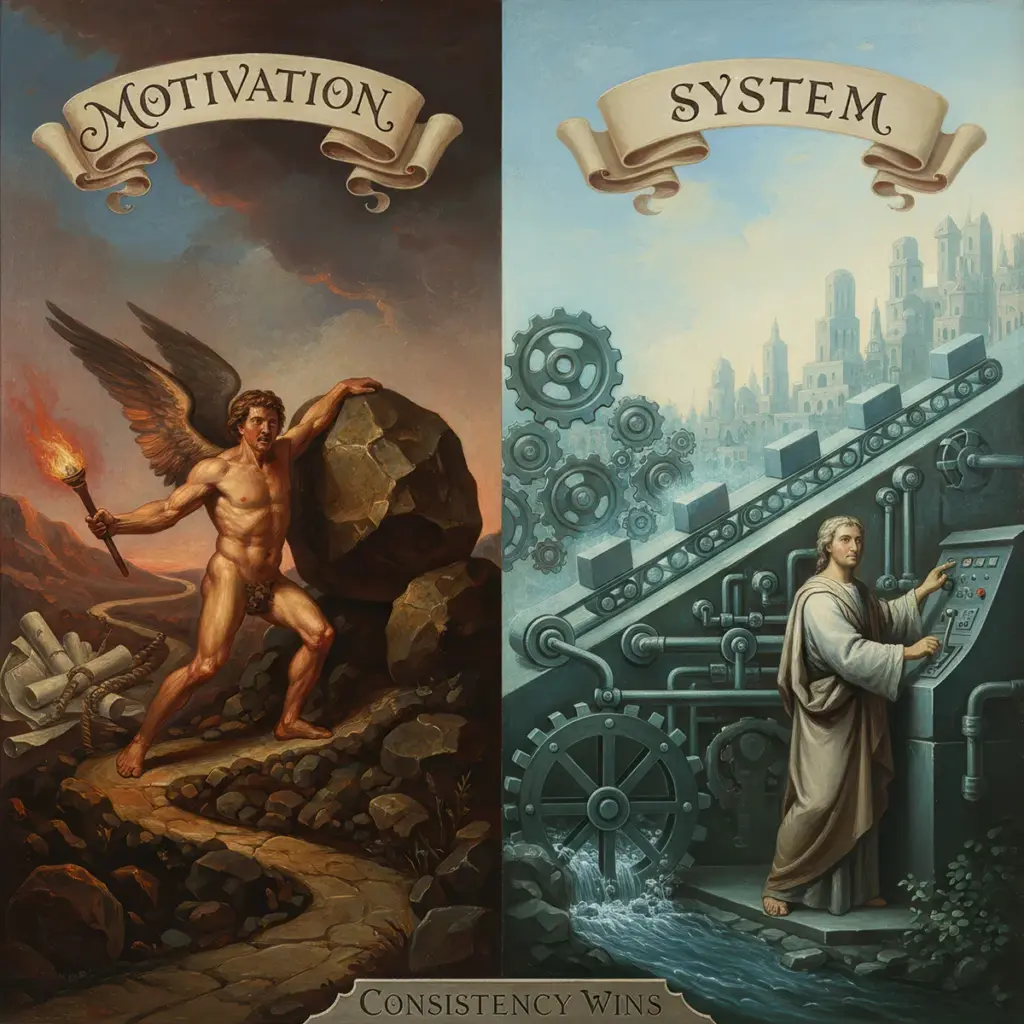
The Application Gap
Here’s an uncomfortable truth: most learning evaporates because we never use it.
Reading about productivity doesn’t make you productive. Watching coding tutorials doesn’t make you a programmer. Listening to language lessons doesn’t make you conversational.
Information becomes knowledge through application.
Learning by doing beats learning by consuming. Take action quickly, even if you’re not ready:
- Read about a programming concept? Write code using it immediately
- Learn cooking technique? Cook something tonight
- Study persuasion psychology? Try it in your next conversation
The application doesn’t need to be perfect. Messy action beats perfect planning.
Project-based learning provides context and motivation. Instead of learning skills in isolation, choose a project that requires those skills:
- Want to learn web development? Build an actual website you need
- Studying data analysis? Analyze something personally interesting
- Learning to write? Start a blog on a topic you care about
The project pulls you through difficulties you’d abandon in abstract study. You learn what you need, when you need it, with clear purpose.
Teaching others is the ultimate application. You can’t fake understanding when explaining to someone else. Their questions expose your gaps. Their confusion reveals where you’re unclear.
Start small:
- Explain new concepts to a friend over coffee
- Write brief explanations in your own words
- Answer questions in online communities
- Create tutorials or guides
Teaching benefits you as much as your students.
Review and Reflection: The Missing Piece
Learning happens in two phases: encoding (taking in information) and consolidation (making it permanent). Most people focus entirely on encoding and wonder why nothing sticks.
Daily reflection takes five minutes but multiplies learning effectiveness:
At the end of each day, ask yourself:
- What did I learn today?
- How does this connect to what I already know?
- How might I use this?
- What questions do I still have?
Write brief answers. The act of retrieving and connecting information strengthens memory more than additional study.
Weekly reviews provide broader perspective:
- What themes emerged this week?
- What surprised me?
- What should I explore deeper?
- What can I let go?
This prevents learning from becoming aimless accumulation.
Monthly assessments reveal patterns invisible daily:
- Am I progressing toward my goals?
- What’s working well?
- What’s not working?
- Should I adjust my approach?
Be honest. If something isn’t working, change it. Persistence is valuable, but so is flexibility.
Connect new learning to existing knowledge. Your brain remembers through association. Isolated facts fade; connected concepts persist.
After learning something new, ask:
- What does this remind me of?
- How is this similar to or different from X?
- Where have I seen this pattern before?
- What field or area might benefit from this idea?
These connections create mental hooks that make retrieval easier.
Avoiding Common Learning Pitfalls
The illusion of competence tricks us into thinking we understand more than we do. Passive reading feels like learning. Highlighting feels productive. Reviewing notes feels like studying.
But familiarity isn’t understanding.
Test yourself. Close the book and try to explain the concept. Can you? Without looking? If not, you don’t know it yet – you just recognize it.
Information hoarding is collecting without processing. Saving hundreds of articles you’ll never read. Buying courses you’ll never take. Bookmarking resources you’ll never review.
This creates the comforting illusion of progress without actual learning. It’s procrastination disguised as productivity.
Solution: Consume less, process more. Read one article deeply instead of skimming ten. Take one course completely instead of starting five. Quality over quantity in learning always.
Tutorial hell traps learners in endless consumption without creation. You watch tutorial after tutorial, always feeling you need one more before you’re ready to build something yourself.
The fix: Follow one tutorial to understand basics. Then immediately try building something similar on your own, without the tutorial. Struggle is where learning happens.
Perfectionism paralysis prevents starting. The right time never comes. You’re never quite prepared enough. Conditions never align perfectly.
Start badly. Learn by doing, not by preparing to do. Progress requires action, and action requires accepting imperfection.
8. Learning Across Different Life Stages

Students and Young Professionals: Building Foundations
Your twenties are for exploration and foundation-building. You have energy, time, and fewer responsibilities than you’ll likely have later.
This is the stage for breadth. Try everything that interests you, even remotely. That random economics class might inform your art career. That coding bootcamp might change how you approach problems in marketing. You don’t know yet which knowledge will prove valuable.
Build learning systems now. The habits you establish in your twenties often persist for decades. Learn how to learn effectively while you have time to experiment.
Focus on:
- Fundamental skills that compound: writing, speaking, critical thinking, numeracy
- Adjacent knowledge to your main field that creates unique combinations
- Soft skills that textbooks don’t teach: networking, negotiation, emotional intelligence
- Building a reputation for curiosity and growth
Don’t rush to specialize too early. The world rewards T-shaped people – deep expertise in one area, broad knowledge across many.
Mid-Career Professionals: Strategic Upskilling
You’re established now. You have expertise. But the world keeps changing.
The skills that got you here won’t necessarily get you there. Industries transform. Technologies emerge. What was cutting-edge five years ago is table stakes now.
Strategic learning matters more than ever. You can’t learn everything, so choose carefully:
- Where is your industry heading? Learn skills that will be valuable in 3-5 years, not just today
- What gaps do you have? Identify weaknesses that limit your advancement
- What complements your strengths? Double down on combinations that make you uniquely valuable
- What prepares you for a pivot? Build optionality in case your path shifts
Time is your constraint now. You can’t spend hours daily learning like you might have earlier. But you have advantages: experience that helps you learn faster, money to invest in quality resources, networks that provide learning opportunities.
Focus on:
- High-leverage skills with broad application
- Staying current in your field
- Learning from experience through reflection
- Building on what you know rather than starting from scratch
You’re no longer building foundations – you’re building upward. Every new skill should connect to existing expertise, creating compounding value.
Parents and Caregivers: Learning with Constraints
Kids change everything about your time, energy, and attention.
But don’t abandon learning. Model curiosity for your children. Show them that growth doesn’t end at graduation. Plus, learning is self-care – something just for you in a life centered on others.
Adapt your approach:
- Micro-learning becomes essential. Five-minute sessions while kids play. Audiobooks during naptime. Educational podcasts during school runs.
- Learn with your kids. Explore topics together. Their homework becomes your learning opportunity.
- Lower your expectations. You won’t progress as fast as you did before kids. That’s okay. Slow progress beats no progress.
- Choose practical learning. Prioritize knowledge that helps you now – parenting strategies, time management, skills for career flexibility.
Don’t compare yourself to people in different life stages. Their learning capacity looks different because their context is different. You’re not failing – you’re adapting.
Many parents say these years are about maintenance, not growth. Keep skills sharp, stay current enough, prevent backsliding. Then ramp up learning again when kids are older.
But some find creative ways to integrate learning into parenting years. They’re different ways, not necessarily lesser ways.
Retirees and Seniors: Learning for Joy and Health
Retirement offers something precious: time without professional pressure. Learn for pleasure, not productivity.
But there’s a practical side too. Cognitive decline isn’t inevitable. Brain health depends partly on genetics, but lifestyle matters enormously. Continuous learning is one of the most powerful interventions.
Research consistently shows that people who engage in intellectually stimulating activities maintain cognitive function better as they age. Learning new skills creates cognitive reserve – a buffer against decline.
Now is the time for:
- Deep dives into topics you never had time for during working years
- Creative pursuits you postponed
- Languages you’ve always wanted to learn
- Mastery without deadline pressure
- Sharing wisdom by teaching others
Physical learning matters too. New physical skills (dancing, tai chi, instruments) combine cognitive challenge with physical activity – a powerful combination for brain health.
Social learning combats isolation. Classes, discussion groups, learning communities provide both mental stimulation and human connection.
You have permission to learn “useless” things. No ROI required. Learn because it’s interesting. Because it’s beautiful. Because you can.
9. Real-World Success Stories
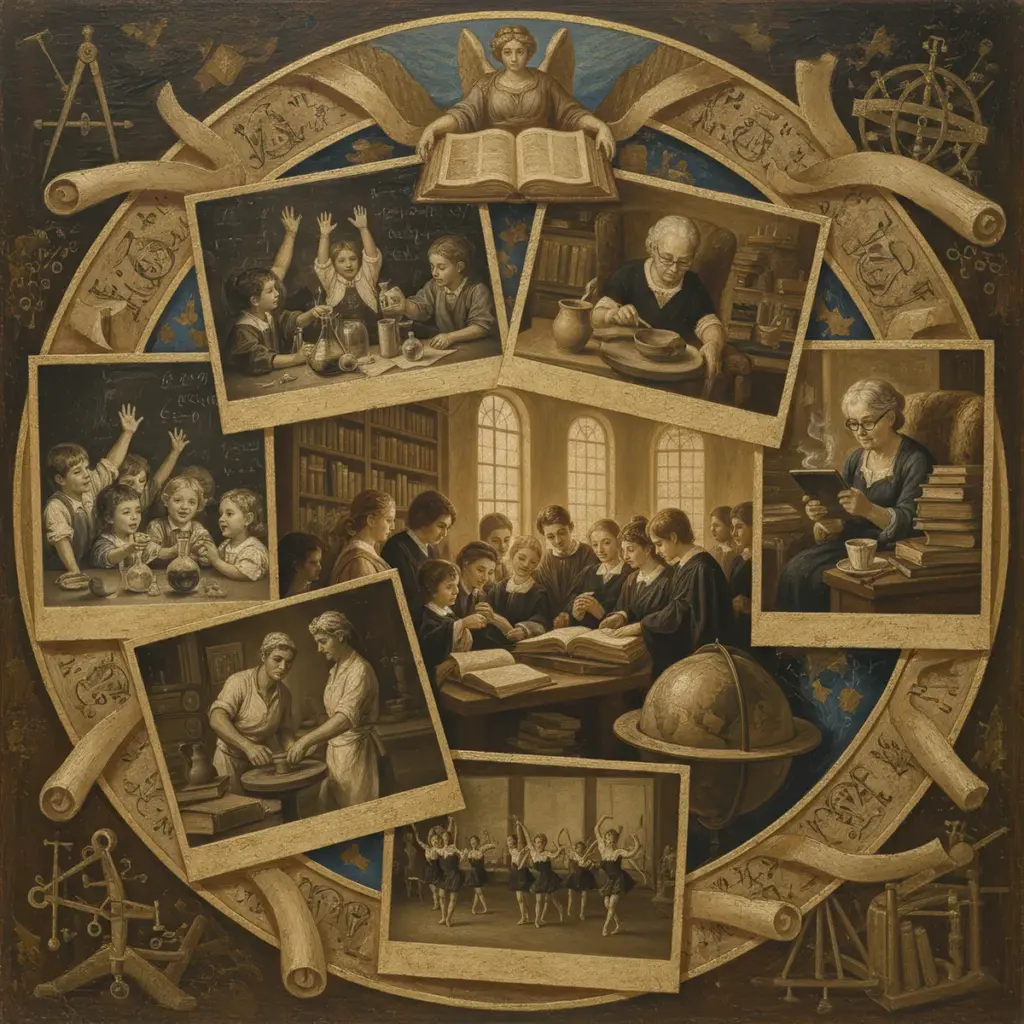
From Stagnant to Startup: Marcus’s Journey
Marcus spent fifteen years as a mid-level manager in retail. Comfortable but unfulfilled. At forty-three, he felt stuck.
He started learning one new thing about technology each day. Not coding – that felt too big. Just understanding concepts. What is an API? How does cloud computing work? What makes an app successful?
Six months in, he understood enough to see opportunities his company was missing. He proposed a digital transformation initiative. His bosses dismissed it.
So he left and did it himself. His deep retail knowledge combined with new tech literacy created unique insight. He built a SaaS platform for independent retailers. It’s not a unicorn, but three years later, it supports his family and employees.
The learning didn’t directly teach him to build a company. It changed how he saw the world. Opportunities invisible before became obvious.
The Grandmother Who Learned to Code
Linda retired at sixty-eight after decades as a librarian. Two months later, she was bored.
She’d always been curious about technology but intimidated. So she committed to learning one coding concept daily, starting with absolute basics.
Scratched-out notes. Lots of frustration. Tutorial after tutorial until things clicked. Small programs that did trivial things but worked.
Three years later, she maintains the website for her local community center and teaches basic digital literacy to seniors. She’s not building apps, but she understands how the digital world works. She’s not intimidated anymore.
More importantly, she proved to herself that age doesn’t limit learning. That confidence spilled into other areas. She started painting. Took up hiking. Learned conversational Spanish.
The coding mattered less than the mindset shift.
The Designer Who Became Multifaceted
Sarah’s story I mentioned earlier deserves expansion. She was competent but conventional as a designer.
Learning one Photoshop technique daily started mechanical – just shortcuts and features. But each technique revealed possibilities. She started experimenting. Combining approaches in unconventional ways.
She got curious about the principles behind design tools. Why does this work? What’s the psychology? She started learning about color theory, composition, human perception.
That led to marketing psychology. Then copywriting. Then basic coding to understand what’s possible on web.
None of this was planned. Each bit of learning sparked curiosity about adjacent areas. After two years, she wasn’t just a better designer – she was a different kind of designer. One who understood the full picture from user psychology to technical implementation.
Her services became more valuable because she spoke everyone’s language. She could design with marketing goals in mind, knowing what developers could actually build, understanding what users would respond to.
The daily learning habit compounded into strategic advantage.
The Career Changer at Fifty
Dev worked in finance for twenty-five years. Successful by conventional measures. Miserable by personal ones.
He’d always loved history but never studied it formally. At fifty, facing another fifteen years of work he didn’t care about, he started learning history daily. Documentaries. Books. Podcasts. Online courses.
It began as escape. It became purpose.
He started writing about what he learned. Blog posts, then articles, then a book proposal. Publishers weren’t interested – who wants history books from a finance guy?
So he self-published. Modest sales. But one corporate training company read it and saw something: someone who understood both business and humanities, who could make history relevant to modern challenges.
They hired him to develop leadership training using historical case studies. Turns out executives love learning strategy from ancient battles and political maneuvering.
Dev took a pay cut but gained a life. He’s not famous, but he wakes up excited to work. The daily learning habit didn’t just teach him history – it opened a path he couldn’t have imagined from inside his old career.
10. Common Challenges and How to Actually Solve Them
“I Don’t Have Time”
This is the most common excuse, and it’s usually a lie we tell ourselves.
Be honest: How much time do you spend on social media? Watching TV you don’t really care about? Scrolling mindlessly? The average person spends over two hours daily on social media alone.
You have time. You’re choosing to spend it elsewhere.
Time audit exercise: Track how you actually spend a typical week. Every activity, every fifteen minutes. You’ll find time you didn’t realize you had.
But let’s say your schedule genuinely is packed. Here’s what works:
Replace, don’t add. Instead of finding new time, use existing time differently:
- Replace morning social media scroll with reading
- Replace TV with educational documentaries
- Replace podcast entertainment with learning content
- Replace commute music with audiobooks
Reduce friction to zero. The easier learning is, the more you’ll do it:
- Queue up learning content before you need it
- Keep learning materials physically present
- Preset learning times in your calendar
- Eliminate decisions about what to learn next
Start absurdly small. Two minutes daily. That’s it. You have two minutes. Everyone does. Build from there once the habit is established.
Protect learning time. Schedule it. Treat it like a doctor’s appointment. Say no to things that conflict. If everything is a priority, nothing is.
Time scarcity is real for some people – single parents working multiple jobs, for instance. But for most of us, time poverty is really priority confusion. We have time for what we truly value.
“I Don’t Know Where to Start”
Decision paralysis stops more people than lack of ability.
Too many options creates anxiety. You freeze, afraid of choosing wrong. So you choose nothing.
Here’s your first 30 days:
Week 1: Explore
- Spend 15 minutes daily sampling different topics and formats
- Try a podcast, a video course, an article, a book chapter
- Notice what captures your attention
- Don’t commit to anything yet
Week 2: Choose
- Pick ONE topic or skill from your exploration
- Choose one primary learning resource (a course, a book, a structured program)
- Commit to it for at least a month before switching
- Set a specific daily learning time
Week 3: Establish Routine
- Learn at the same time each day
- Track your consistency (checkmark on calendar)
- Focus on showing up, not perfection
- Adjust time or format if something’s not working
Week 4: Deepen
- Apply what you’re learning somehow
- Connect with others learning the same thing
- Reflect on what’s working
- Plan your next learning focus
If you’re still paralyzed, flip a coin. Seriously. Pick between two options randomly. The anxiety often comes from fear of wrong choices, but most learning paths are valuable. Any direction is better than standing still.
“I Keep Quitting”
Starting is easy. Continuing is hard.
You begin enthusiastically. Progress feels good initially. Then difficulty increases. Novelty wears off. Other priorities emerge. You skip a day. Then another. Momentum evaporates.
This pattern is normal. Understanding why it happens helps you prevent it.
Motivation fades inevitably. Don’t rely on it. Build systems that work when motivation is gone:
- Habit stacking: Attach learning to an existing solid habit (after coffee, before dinner, during lunch)
- Environmental design: Make learning easier than not learning (book on your pillow, app on home screen, materials ready)
- Commitment devices: Tell others your goals, join a challenge, put money on the line
- Restart protocols: When you skip, have a plan to restart immediately without guilt
Lower the barrier on difficult days. Don’t maintain the same standard every single day. On tough days, read one paragraph. Listen to five minutes of a podcast. Do something, even if trivial.
The habit of showing up matters more than the amount learned. You can always do more on good days.
Connect learning to identity. See yourself as someone who learns daily, not someone trying to learn. This subtle shift changes everything. You’re not forcing yourself to study – you’re doing what people like you do.
Find your why beneath the why. You want to learn Spanish. Why? To travel. Why? To experience other cultures. Why? To feel alive and grow as a person.
When you hit the deepest why, superficial obstacles matter less. You’re not just learning Spanish – you’re becoming the person you want to be.
Get accountability. Join a learning group. Share progress publicly. Find a learning partner. Bet money on completion. External pressure helps when internal motivation fails.
“I’m Not Retaining Anything”
You’re reading, watching, listening – but nothing sticks. You finish courses remembering almost nothing. You learn things that disappear within days.
This is usually a symptom of passive consumption. Information enters your brain but doesn’t integrate.
Active learning fixes this:
After consuming information:
- Summarize it in your own words (writing or speaking)
- Ask questions about what you don’t understand
- Connect it to something you already know
- Apply it somehow, even trivially
- Teach it to someone else
This seems like more work. It is. But you’ll remember ten times more while spending less total time.
Spaced repetition also dramatically improves retention. Review material:
- 1 day after learning
- 3 days later
- 1 week later
- 1 month later
- 3 months later
This schedule aligns with how memory consolidation works. Each review strengthens the neural pathway.
Sleep matters more than people realize. Memory consolidation happens during sleep. If you’re sleep-deprived, you’re fighting biology. Seven to nine hours isn’t optional for learning – it’s essential.
Check your attention. Are you actually focused during learning? Or multitasking, distracted, thinking about other things? Five minutes of focused attention beats thirty minutes of divided attention.
Question your methods. Some material requires different approaches. Dense technical content needs note-taking and practice. Historical narratives might stick from just reading. Philosophy benefits from discussion. Adjust your method to the material.
11. Advanced Learning Strategies for Serious Learners

Meta Learning: Learning How to Learn
The most valuable skill is learning itself. Get better at learning, and everything else becomes easier.
Meta learning means studying your own learning process. What works for you? What doesn’t? When do you learn best? How do you retain information?
This requires experimentation and observation:
- Try different times of day for learning – track which feels most effective
- Test various note-taking methods – measure what improves recall
- Compare different types of resources – notice what maintains engagement
- Experiment with study techniques – assess what builds genuine understanding
Keep a learning journal documenting not just what you learned, but how you learned it. Patterns emerge over time.
The Pareto Principle applies to learning: 20% of your efforts produce 80% of results. Identify which activities truly move the needle:
- Which learning methods improve retention most?
- Which topics provide leverage across multiple areas?
- Which times of day yield highest quality learning?
- Which resources are worth the investment?
Double down on the 20%. Minimize or eliminate the rest.
Learn in multiple modalities. Reading about a concept, watching a video explanation, discussing it with someone, and practicing it yourself creates stronger neural networks than any single approach.
Teach what you’re learning. This forces clarity and reveals gaps. If you can’t explain it simply, you don’t truly understand it yet. Teaching is learning twice.
Building Your Learning Network
Isolated learning has limits. Learning in community multiplies effectiveness.
Mastermind groups gather people with similar goals who meet regularly to share progress, challenges, and insights. The commitment to update others creates accountability. Their perspectives reveal blind spots.
Find or create one:
- 3-6 people with similar learning objectives
- Meet weekly or biweekly
- Each person shares progress and challenges
- Group provides feedback and support
- Keep it structured but supportive
Online communities connect you with learners worldwide. The best ones balance information sharing with genuine relationship building:
- Reddit communities organized by subject
- Discord servers for real-time discussion
- LinkedIn groups for professional topics
- Specialized forums for niche interests
Participate actively. Answer questions. Share what you’re learning. Build relationships beyond transactional information exchange.
Mentorship accelerates learning impossibly. Someone who’s already achieved what you’re working toward can guide you around pitfalls and toward opportunities.
Finding mentors:
- Look within your network for people slightly ahead of you
- Reach out with specific questions, not generic requests
- Offer value in return (your time, skills, perspective)
- Make it easy for them (respect their time, come prepared, follow through)
- Build relationships gradually, not transactionally
Reverse mentorship matters too. Teach someone behind you on the learning path. Explaining concepts solidifies your own understanding while helping others.
From Learning to Mastery
Daily learning creates breadth. Mastery requires depth.
The 10,000-hour rule (popularized by Malcolm Gladwell) suggests mastery requires roughly 10,000 hours of practice. This is somewhat misleading – the quality of practice matters more than quantity.
Deliberate practice is structured, focused work on specific weaknesses with immediate feedback:
- Identify specific areas needing improvement
- Design exercises targeting those areas
- Practice with full concentration
- Get feedback (from a teacher, community, or self-assessment)
- Adjust based on feedback
- Repeat
This is uncomfortable. You’re constantly working at the edge of your ability. But it’s far more effective than enjoyable practice of things you already do well.
Specialization strategy:
- Build foundation broadly (1-2 years)
- Identify focus based on interest and opportunity
- Go deep in chosen area (3-5 years)
- Maintain breadth adjacent to specialty
- Periodically reassess whether focus still serves you
Mastery isn’t a destination. It’s a relationship with a domain that continues evolving. Masters remain students forever – they’ve just specialized their learning.
12. The Future of Daily Learning
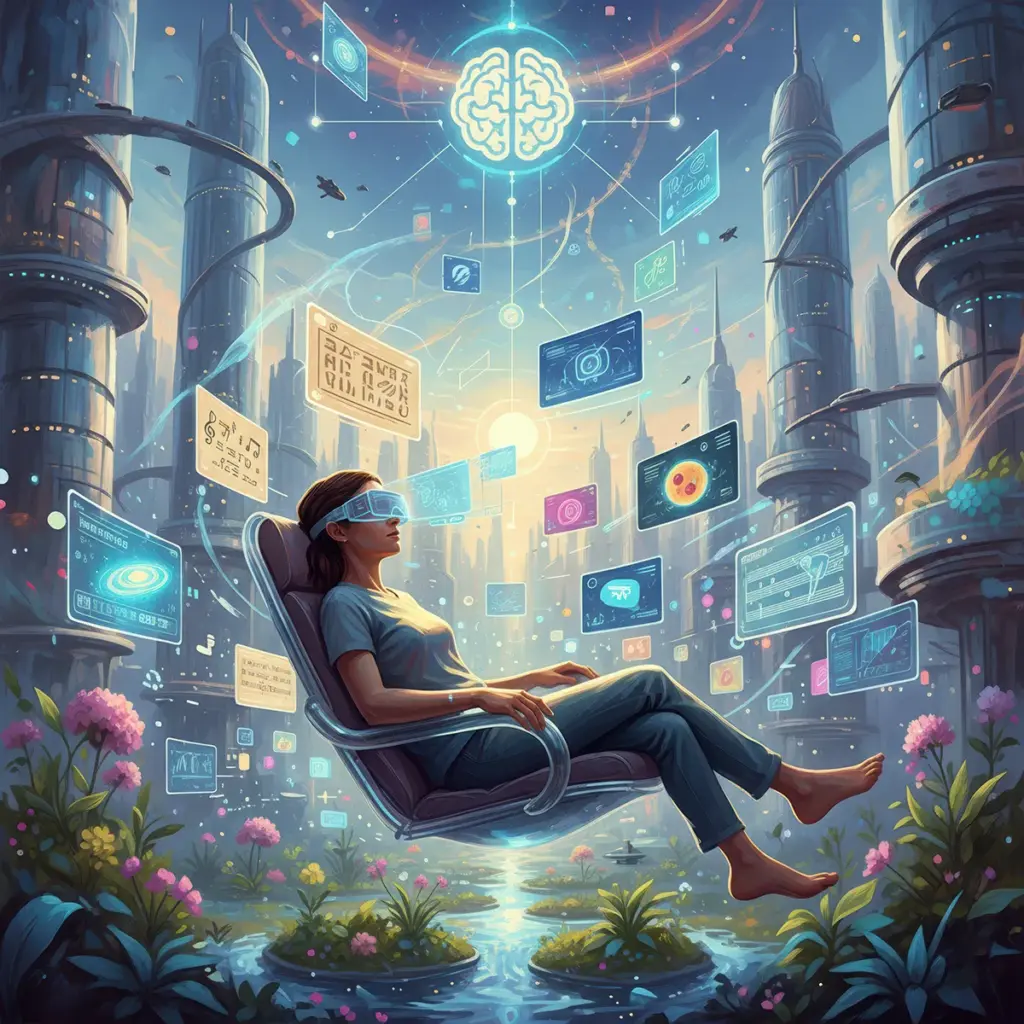
Technology Reshaping How We Learn
Artificial intelligence is transforming learning in ways we’re just beginning to understand.
Personalized learning becomes genuinely personalized. AI tutors that adapt to your learning style, pace, and knowledge gaps. Content that adjusts difficulty in real-time. Explanations customized to your background and interests.
This isn’t future speculation – it exists now and is improving rapidly.
Immersive technologies create learning experiences impossible in traditional formats. Virtual reality places you inside historical events. Augmented reality overlays information on the physical world. Simulations let you practice skills without real-world consequences.
AI-powered tools already:
- Generate practice problems at your skill level
- Provide instant feedback on writing or code
- Translate content into any language
- Summarize long-form content
- Answer questions conversationally
But technology is a tool, not a replacement for effort. The fundamentals of learning – attention, practice, application, reflection – remain human activities.
The Changing Nature of Knowledge Work
Jobs increasingly require continuous learning. Static skills depreciate fast. The half-life of technical knowledge is shrinking.
Adaptability becomes the most valuable skill. Not what you know now, but how quickly you can learn what’s needed next.
Organizations recognize this. Hiring shifts toward learning ability over current knowledge. Promotion favors those who evolve with change.
Self-directed learning is no longer optional. Formal education provides foundations, but career-long learning determines trajectory. You’re responsible for your own skill development.
This sounds daunting. But it’s also empowering. You’re not locked into one path. You can pivot, reinvent, explore. Learning daily keeps options open.
Staying Adaptable in Uncertainty
The future is unpredictable. Industries transform. Technologies emerge. Crises disrupt everything.
Daily learning is insurance against obsolescence. It’s preparation for opportunities you can’t anticipate. It’s building capacity for whichever future arrives.
Antifragility in your career means gaining from disorder rather than just surviving it. How? By continuously developing diverse skills, broad knowledge, and deep adaptability.
When disruption comes – and it will – you’ll have resources to draw on. Connections between domains that suddenly become valuable. Skills that transfer to new contexts. Habits that help you learn what’s needed quickly.
The most important skill for the future is the skill you’re developing right now: learning something new every day.
13. Your 30-Day Quick Start Plan
Week One: Foundation and Assessment
Days 1-3: Inventory and Intention
Before adding more, understand what you have.
Day 1: Complete a time audit. Track everything you do today in 30-minute blocks. Be honest. At the end, highlight periods where learning could realistically fit.
Day 2: List topics that genuinely interest you. Don’t filter for practicality – write everything. Career skills, hobbies, random curiosities. Then categorize them:
- Professional development
- Personal growth
- Creative expression
- Pure curiosity
Day 3: Set your learning intention. Using the 70-20-10 framework:
- 70%: What skill would most impact your current goals?
- 20%: What complements your main focus?
- 10%: What pure curiosity wants exploration?
Write one sentence for each category.
Days 4-7: Method Exploration
Test different learning formats to discover what works for you.
Day 4: Try audio learning. Download an educational podcast or audiobook. Listen during a commute, workout, or chores. Notice: Does this format work for your attention style?
Day 5: Try video learning. Watch a 15-minute educational video on YouTube or a learning platform. Take notes. Notice: Does visual learning help comprehension?
Day 6: Try reading. Read a chapter or long article on your chosen topic. Summarize it in your own words afterward. Notice: Does text-based learning stick better?
Day 7: Try interactive learning. Complete one lesson on Duolingo, Codecademy, or similar platform. Notice: Does doing help more than consuming?
Reflection: Which format engaged you most? Which seemed most effective? You’ll probably use multiple formats, but knowing your preference helps.
Week Two: Building the Habit
Days 8-10: Establish Your Routine
Day 8: Choose your consistent learning time. Based on Week 1’s time audit, pick when learning will happen daily. Set a recurring alarm or calendar reminder. Prepare your space and materials tonight for tomorrow’s session.
Day 9: Your first official learning session. Spend 15 minutes on your 70% focus topic using your preferred format. When finished, immediately schedule tomorrow’s session.
Day 10: Second session. If you showed up, that’s success – quality matters less than consistency right now. After learning, write one sentence about what you learned.
Days 11-14: Micro-Commitments
Day 11: Continue your daily learning. Today, focus on active engagement: take notes, ask questions, or immediately apply something.
Day 12: Track your consistency. Create a simple tracking method (calendar checkmarks, app, journal). Make it visible.
Day 13: Learning day six. By now, you might feel resistance. This is normal. Lower the bar if needed – five minutes counts. The habit matters more than the amount.
Day 14: Week two complete. Reflect: What’s working? What’s difficult? Adjust one thing for next week (time, format, topic, or duration).
Week Three: Deepening Practice
Days 15-17: Active Learning
Day 15: After today’s learning, use the Feynman Technique: explain what you learned to someone (or to yourself) in simple language. Notice where you get stuck – those are gaps to revisit.
Day 16: Connect today’s learning to something you already know. Write down at least two connections: “This is similar to…” or “This relates to…”
Day 17: Apply something you’ve learned this week. Even trivially. Used a new vocabulary word? Applied a technique? Discussed a concept? Application cements learning.
Days 18-21: System Development
Day 18: Create your personal knowledge base. Choose a tool (notebook, app, or digital file) where you’ll capture key insights. Spend today organizing what you’ve learned so far.
Day 19: Add a review component. Spend 5 minutes reviewing notes from last week before today’s new learning. Notice how much you’ve forgotten versus retained.
Day 20: Find community. Join one online community related to your learning focus. Read what others are discussing. You don’t need to post yet – just observe.
Day 21: Three weeks complete. Assess honestly: Is this sustainable? Too easy? Too hard? Adjust for week four.
Week Four: Optimization and Commitment
Days 22-24: Refinement
Day 22: Experiment with your 20% topic (adjacent skill). Spend today’s session exploring something complementary to your main focus. Notice how it connects.
Day 23: Try a different time of day if possible. Does morning versus evening learning feel different? Learning quality varies by time for most people.
Day 24: Add social learning. Share something you’ve learned with someone today. Post in your online community, tell a friend, or teach a colleague.
Days 25-28: Integration
Day 25: Follow curiosity. Today’s learning session can be pure curiosity (your 10%). Something totally unrelated to goals. Just interesting.
Day 26: Reflect on your learning method. What’s helped retention most? Active notes? Spaced review? Application? Do more of what works.
Day 27: Plan your second month. What’s the next topic or skill? How will you deepen current learning? Write a simple plan.
Day 28: Create your restart protocol. You will skip days eventually. Write down exactly what you’ll do when that happens: “When I skip a day, I will…”
Days 29-30: Commitment
Day 29: Review your 30-day journey. Look at your tracking, notes, and progress. You’ve learned for 29 days straight (or nearly). Notice how different this feels from day one.
Day 30: Commit forward. Decide: Will you continue? If yes, what’s your commitment? Daily? Five days weekly? What’s realistic long-term? Write it down. Share it with someone.
Celebrate. Thirty days of daily learning is genuinely significant. Most people never do this. You have.
Your Next Steps After 30 Days
The first month builds the habit. Now you deepen it.
Month two focuses on quality:
- Increase session length if comfortable
- Add active learning techniques consistently
- Develop your personal knowledge system
- Engage more in your learning community
Month three adds variety:
- Rotate between your 70-20-10 topics
- Try new resources and formats
- Connect learnings across domains
- Share your knowledge publicly
Month six reassesses:
- What’s working well?
- What needs adjustment?
- Are you progressing toward goals?
- Should your focus shift?
Conclusion: The Lifelong Learning Mindset
Learning something new every day isn’t about accumulating facts. It’s about maintaining a relationship with growth.
Some days you’ll learn profound things that change your perspective. Most days you’ll learn small things that seem insignificant. Both matter. The profound moments only come because of the small, consistent ones.
You’ll encounter periods where learning feels exciting and effortless. You’ll encounter periods where it feels like a chore. Keep going through both. The habit survives on consistency, not motivation.
This isn’t about becoming the smartest person in the room or impressing others with your knowledge. It’s about staying curious, staying engaged, staying alive to possibility.
Your brain will stay sharper. Your career will stay adaptable. Your conversations will stay interesting. Your life will stay dynamic.
But more than any practical benefit, daily learning is a statement about how you want to move through the world. Not as someone who peaked in their twenties and coasted thereafter. As someone who believes that growth remains possible, always.
Every day offers a choice: stagnation or growth. Comfort or curiosity. Same or different.
You’re choosing growth. You’re choosing curiosity. You’re choosing to learn something new.
That choice, repeated daily, compounds into a life of continuous transformation.
Start today. Start small. Stay consistent.
Learn something new every day, and watch everything change.
